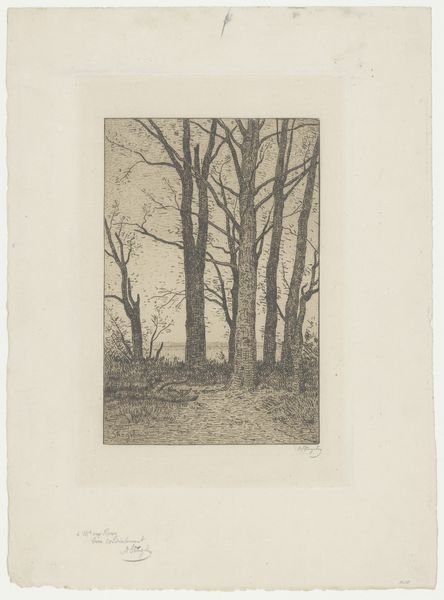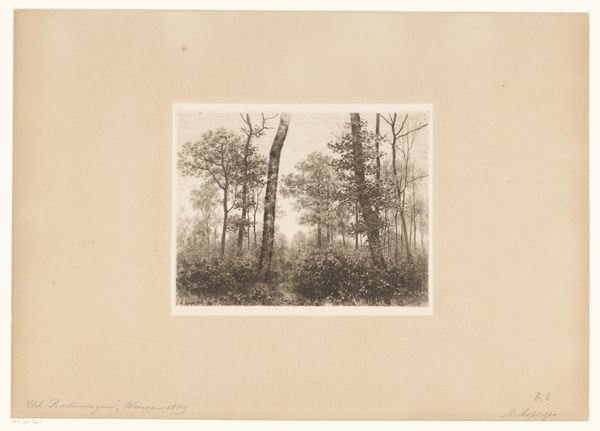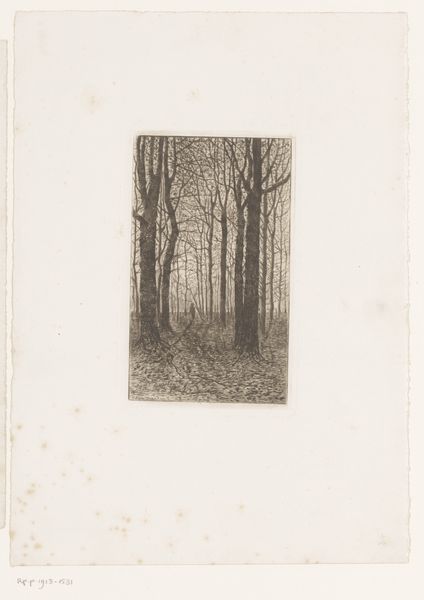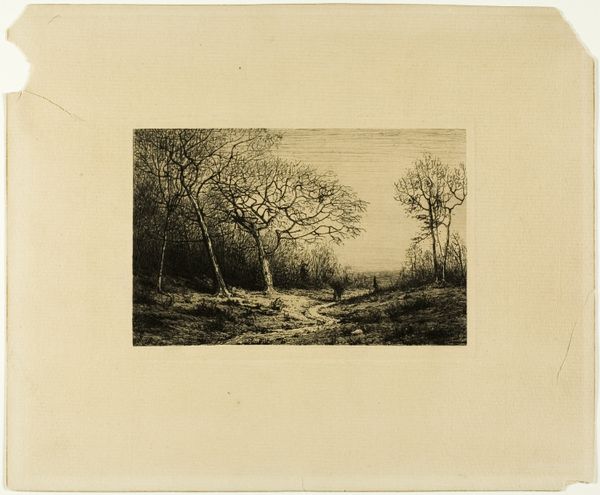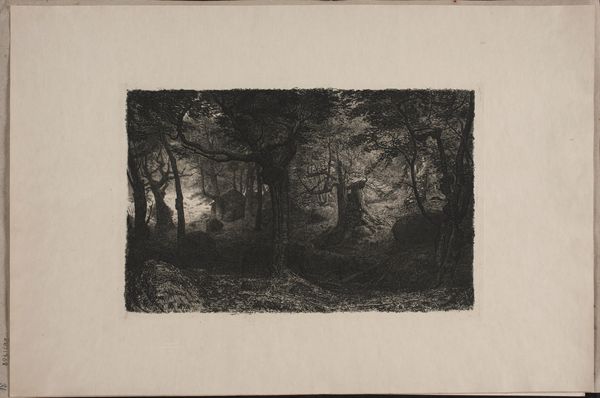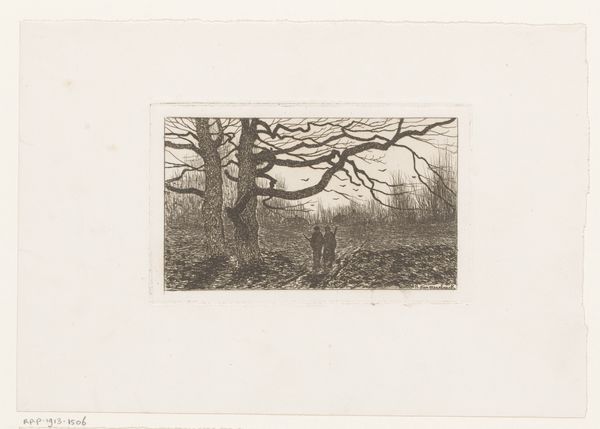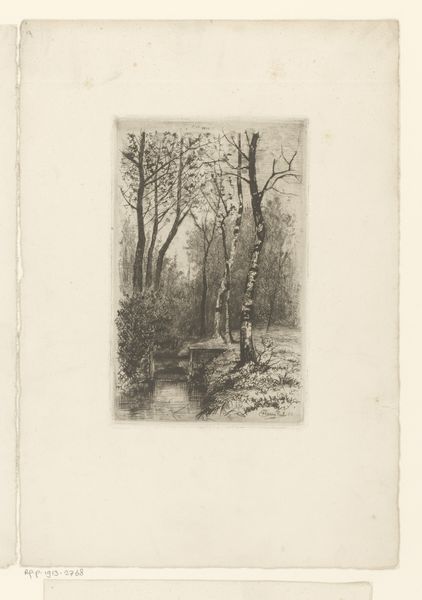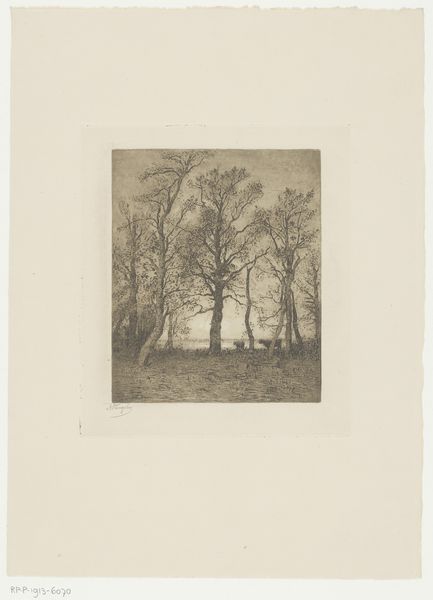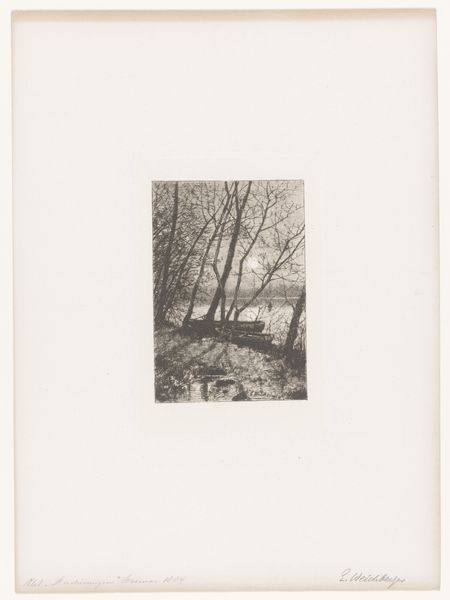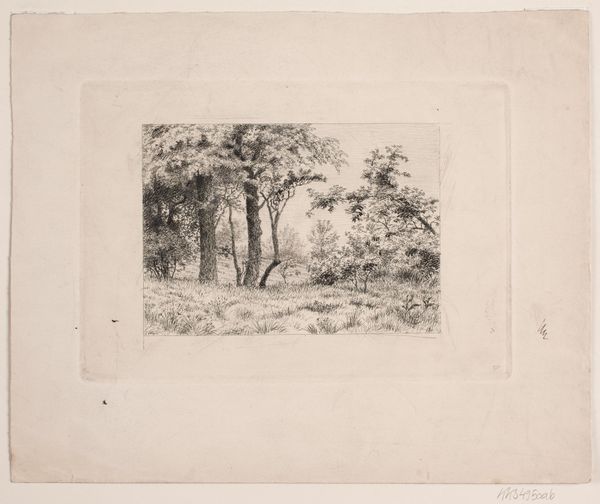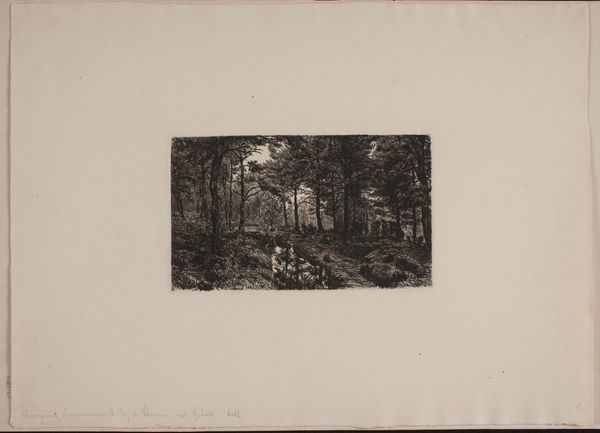
drawing, etching, paper
#
drawing
#
impressionism
#
etching
#
landscape
#
paper
#
forest
#
watercolor
Dimensions: height 111 mm, width 165 mm
Copyright: Rijks Museum: Open Domain
Editor: We're looking at "Wandelaar met zijn hond in het bos" or "Wanderer with his dog in the forest" by Karl Buchholz, an etching made in 1888. The limited palette gives it an austere mood, almost desolate. What strikes you about this work? Curator: What stands out to me is the labor-intensive process of etching used to depict this forest scene. Think about the tools, the acid, the meticulous work required to create this image. Doesn't this method itself become part of the art's meaning? Editor: I see your point! It definitely makes me think about the time and effort involved, and perhaps how that translates into value, or even comments on industrialization. Curator: Precisely. Consider the paper too. Its production is directly linked to deforestation and industrial growth, themes juxtaposed here by depicting a natural landscape. What does the choice of materials communicate to you? Editor: It almost feels contradictory, like nature being captured using methods that also exploit it. The commercial availability of paper and etching must have impacted the accessibility and consumption of art. Curator: Absolutely. This artwork transcends a simple landscape, revealing how its creation reflects the complex interplay of materials, production, and cultural values during that time. Editor: Thinking about the artwork through that lens really makes me appreciate the connection between materials and meaning. Thank you for sharing your insight! Curator: My pleasure! Considering these elements opens a richer understanding.
Comments
No comments
Be the first to comment and join the conversation on the ultimate creative platform.

